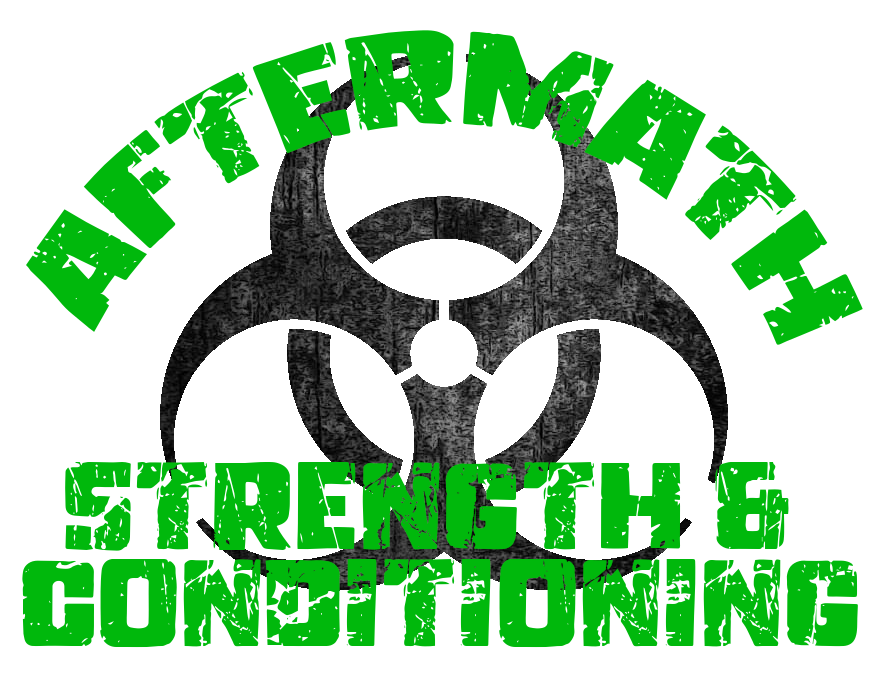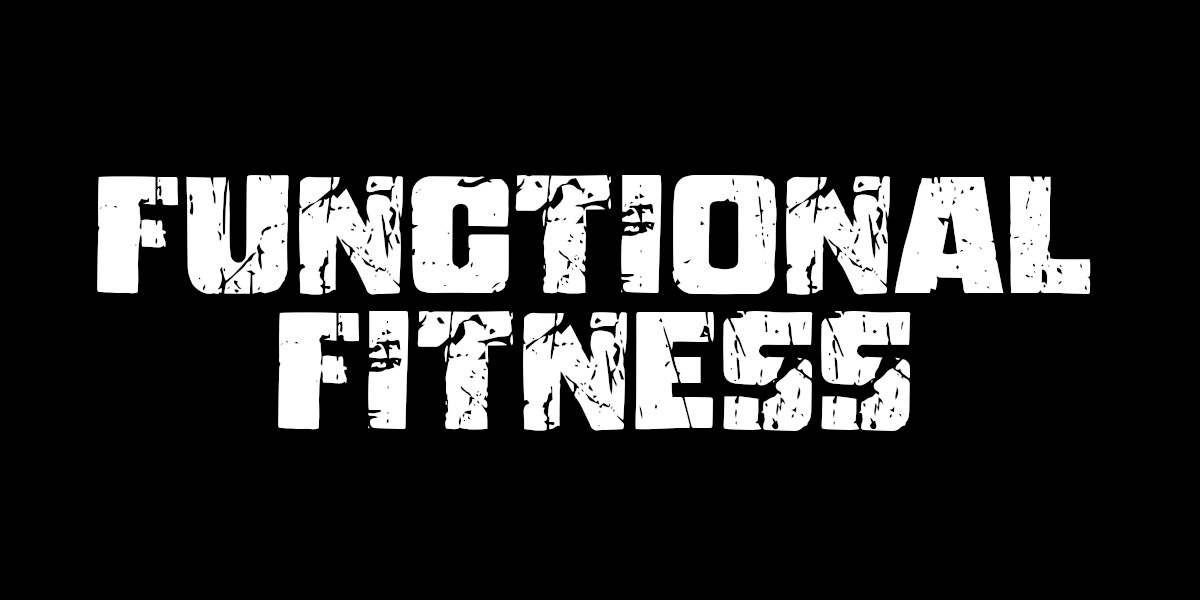At Aftermath Strength & Conditioning, we believe that fitness is about more than just aesthetics—it’s about improving your overall well-being, enhancing your performance in everyday life, and reaching your full potential. Our training program is based on functional fitness, a versatile and comprehensive approach to training that combines strength, endurance, and mobility to help you perform better, look better, and feel better.
Functional fitness focuses on training your body for the movements you perform in daily life, with exercises designed to increase strength, mobility, and stamina. This type of training challenges both your physical and mental endurance, improving your fitness in a holistic way while delivering real, lasting results.
What is Functional Fitness?
Functional fitness is all about training movements that translate into real-world applications. Whether you’re lifting heavy objects, climbing stairs, or simply trying to keep up with your kids, the functional movements you perform will improve your ability to handle these tasks with ease. The workouts are designed to be varied, incorporating different modalities such as bodyweight exercises, Olympic lifts, kettlebells, gymnastics movements, and high-intensity conditioning. This blend of exercises works multiple energy systems and muscle groups simultaneously, providing a full-body workout that enhances your physical abilities in every aspect of life.
Benefits for Weight Loss
If weight loss is your primary goal, functional fitness delivers exceptional results. By incorporating high-intensity training with short bursts of intense effort followed by brief rest periods, functional fitness helps elevate your heart rate and burns a significant amount of calories during and after your workout. This style of training promotes fat loss while maintaining or even building lean muscle mass.
What makes functional fitness even more effective for weight loss is its ability to build muscle throughout your entire body. Muscle tissue is metabolically active, meaning that the more muscle you have, the more calories you burn, even at rest. Over time, this leads to improved body composition, where fat is replaced with lean, strong muscle that not only looks better but also functions better.
Muscle Gain and Strength Development
In addition to fat loss, functional fitness is incredibly effective for muscle gain and strength development. The combination of compound movements—like squats, deadlifts, presses, and pulls—ensures that you’re working multiple muscle groups at once, which leads to more balanced strength and muscle growth. Unlike traditional machines that isolate muscles, functional fitness exercises engage entire movement patterns, promoting greater overall strength and coordination.
Movements like Olympic lifts (e.g., cleans and snatches) and bodyweight exercises (e.g., push-ups, pull-ups) are perfect for building functional strength. They not only target specific muscle groups but also challenge your balance, stability, and coordination, creating well-rounded fitness that’s beneficial both in and out of the gym.
Improving Quality of Life
One of the most significant benefits of functional fitness is its positive impact on the quality of your life. It’s not just about how you look—though that’s a great bonus—but how you feel and how well you move. By improving strength, flexibility, endurance, and mobility, functional fitness makes everyday tasks easier and helps you stay active and pain-free for longer. Whether it’s carrying groceries, playing sports, or picking up your kids, functional fitness prepares your body to perform these movements efficiently and without injury.
Moreover, the variety in functional fitness training ensures that both your body and mind stay engaged. Because the workouts change frequently, you never get bored, and you’ll consistently be challenged to improve and adapt. This is a major factor in long-term adherence to a fitness routine and, ultimately, long-term success.
The 10 Areas of Fitness
One of the core philosophies of functional fitness is its emphasis on developing a broad range of physical capabilities. Our approach aims to improve your fitness in 10 key areas, which are critical to performing well in everyday activities:
- Strength – The ability to generate force. Strength is fundamental to almost every movement, from lifting heavy objects to performing basic bodyweight exercises. Functional fitness develops full-body strength through compound, multi-joint movements like squats, deadlifts, and presses.
- Speed – The ability to move quickly. Speed doesn’t just mean sprinting—it’s about being able to react quickly and move efficiently. Speed training is integrated into functional fitness through dynamic exercises like sprints, jumps, and quick transitions.
- Power – The combination of strength and speed. Power is critical in explosive movements like jumping, throwing, or lifting heavy weights quickly. Olympic lifts and plyometric exercises are examples of movements that develop power.
- Balance – The ability to control your body’s position, whether stationary or while moving. Functional fitness improves balance through exercises that challenge your stability, like single-leg deadlifts, squats, and overhead movements.
- Flexibility – The ability to move joints and muscles through a full range of motion. Functional fitness incorporates flexibility training by using movements that enhance mobility, such as dynamic stretches, yoga-inspired movements, and controlled, full-range exercises.
- Cardiovascular/Respiratory Endurance – The ability to sustain aerobic activity for extended periods. This is developed through high-intensity interval training (HIIT) and long-duration endurance work that challenges both your heart and lungs.
- Agility – The ability to move quickly and change direction. Agility is key in sports and in daily life when quick reactions are needed. Functional fitness includes drills like ladder drills, cone drills, and shuttle runs to develop this skill.
- Accuracy – The ability to control your movements in a precise manner. Exercises like throwing, jumping, and lifting in functional fitness are performed with a focus on accuracy, ensuring that your movements are controlled and effective.
- Coordination – The ability to use different parts of your body together smoothly. Through complex movement patterns, functional fitness improves coordination, which is essential for efficient movement and injury prevention.
- Stamina – The ability to sustain prolonged physical effort. Functional fitness develops stamina through metabolic conditioning, helping you build endurance and the capacity to perform tasks for longer periods without fatigue.
By targeting all 10 areas of fitness, functional fitness ensures that you become a well-rounded athlete, ready to perform at your best no matter the task at hand.
Why Aftermath Strength & Conditioning?
At Aftermath Strength & Conditioning, our goal is to help you achieve holistic fitness that improves your performance in all areas of life. Whether you’re looking to lose weight, build muscle, or simply feel better day-to-day, our approach is designed to guide you through every step of your journey. We focus on personalized coaching, ensuring that your program is tailored to your unique goals, abilities, and progress.
We understand that fitness is a lifelong commitment, and our team is here to provide the support, guidance, and accountability you need to succeed. Through functional fitness, we’ll help you become stronger, leaner, and more resilient, both in the gym and in life.
If you’re ready to take your fitness to the next level and experience the transformative benefits of functional training, join us at Aftermath Strength & Conditioning. Together, we’ll unlock your full potential and help you achieve lasting results that improve every aspect of your life.



Comments are closed